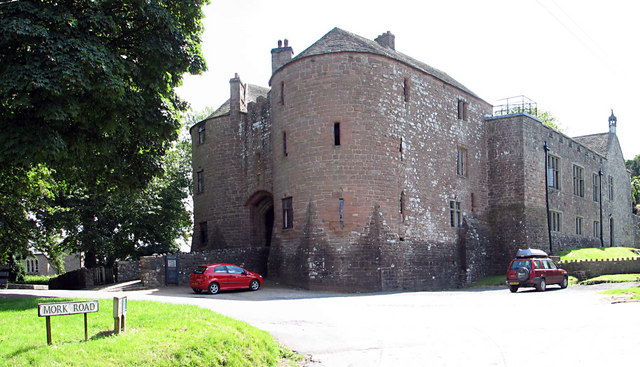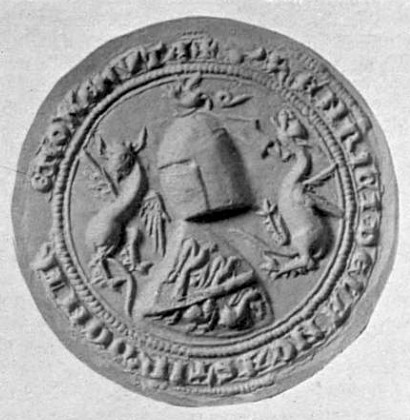|
John De Wisham (died 1332)
Sir John de Wisham (died 1332) of Little Ellingham, was an English knight and administrator who served as St Briavels Castle, Constable of St Briavels Castle, Justice of North Wales, Seneschal of Gascony (1324–1325) and Captain of Berwick-upon-Tweed (1316). Life Wisham was a son of Ralph de Wisham and Emilia. John held the position of Captain of Berwick-upon-Tweed between 13 June 1316 and 1 July 1317. Appointed on 18 November 1324, replacing Ralph Basset, 2nd Baron Basset of Drayton, Ralph Basset of Drayton, as Seneschal of Gascony, Wisham held the position for less than one year before being replaced by Henri IV de Sully, Henri de Sully on 14 August 1325. ''The Gas ... [...More Info...] [...Related Items...] OR: [Wikipedia] [Google] [Baidu] |
St Briavels Castle
St Briavels Castle is a moated Norman castle at St Briavels in the English county of Gloucestershire. The castle is noted for its huge Edwardian gatehouse that guards the entrance. St Briavels Castle was originally built between 1075 and 1129 as a royal administrative centre for the Forest of Dean. During the 13th century the castle became first a favourite hunting lodge of King John, and then the primary centre in England for the manufacture of quarrels, large numbers of which were required for crossbows in medieval warfare. The castle was transferred many times between royal favourites in the 14th and 15th centuries and slowly declined in appearance and importance. St Briavels Castle became used primarily as a court and as a notorious debtors' prison, conditions being documented by the prison reformer John Howard in 1775. Following local riots and a parliamentary investigation in the 1830s, reforms in the 19th century brought an end to the castle's use as a prison. Extensive ... [...More Info...] [...Related Items...] OR: [Wikipedia] [Google] [Baidu] |
Seneschal Of Gascony
The Seneschal of Gascony was an officer carrying out and managing the domestic affairs of the lord of the Duchy of Gascony. During the course of the twelfth century, the seneschalship, also became an office of military command. After 1360, the officer was the Seneschal of Aquitaine."Principal Office Holders in the Duchy" an "Seneschals of Gascony, of Aquitaine after 1360 (1273–1453)" ''The Gascon Rolls Project (1317–1468)''. There was an office above the seneschalcy, the [...More Info...] [...Related Items...] OR: [Wikipedia] [Google] [Baidu] |
Ralph Basset, 2nd Baron Basset Of Drayton
Ralph Basset, 2nd Baron Basset of Drayton (died 25 February 1343) was a 13th-14th century English nobleman who fought in both the Anglo-French War and in the First War of Scottish Independence. Background Basset was the son of Ralph Basset and Hawise de Grey. Ralph succeeded his father on his death on 31 December 1299, and was knighted on 22 May 1306. Military career Distinguishing himself in France, Ralph was appointed to the office of Seneschal of Gascony on 11 June 1323, also serving as the Steward of the Duchy of Aquitaine. Within the first four months of holding office in Gascony, the Gascon nobleman Raymond-Bernard de Montpezat raided Saint-Sardos and hanged a royal sergeant of King Charles IV of France. Basset was within the village's vicinity when de Montpezat raided Saint-Sardos and the two had met only two days earlier. The French assumed Basset was complicit in the raid. King Edward II of England sent forth an apology to the French king, declaring his innocence. B ... [...More Info...] [...Related Items...] OR: [Wikipedia] [Google] [Baidu] |
Henri IV De Sully
Henri IV de Sully (died 1336), Grand Butler of France, Treasurer of France, Lord of Sully was a 13th-14th century French noble. Biography Henri IV de Sully was the eldest son of Henri III de Sully and Marguerite de Bommiers. Sully was an adviser to King Philip IV of France at the end of his reign, and tutored Phillip's younger son Count Philip de Poitiers. In 1316, Sully supported the latter at his accession to the regency and the throne of France as King Philip V of France, and was rewarded by receiving the prestigious office of Grand Butler of France in 1317. Sully played a key role in the administration of the kingdom by becoming Treasurer of France. He also played a key diplomatic role, participating in the reconciliation between Philip V and his cousin Robert III of Artois. In 1318, Sully was sent as an embassy to Pope John XXII. The same year, Sully was involved in a major dispute with Beraud de Mercœur, a royal adviser, whom Sully accused of treason. The king had to ... [...More Info...] [...Related Items...] OR: [Wikipedia] [Google] [Baidu] |
Lord Steward
The Lord Steward or Lord Steward of the Household is an official of the Royal Households of the United Kingdom, Royal Household in England. He is always a peerage, peer. Until 1924, he was always a member of the Government. Until 1782, the office was one of considerable political importance and carried Cabinet rank. The Lord Steward receives his appointment from the Monarch, Sovereign in person and bears a white staff as the emblem and warrant of his authority. He is the first dignitary of the court. In the House of Lords Precedence Act 1539, an Act of Parliament for placing of the lords, he is described as the grand master or lord steward of the king's most honourable household. He presided at the Board of Green Cloth, until the Board of Green Cloth disappeared in the reform of local government licensing in 2004, brought about by the Licensing Act 2003 (section 195). In his department are the Treasurer of the Household and Comptroller of the Household, who rank next to him. The ... [...More Info...] [...Related Items...] OR: [Wikipedia] [Google] [Baidu] |
Edward III Of England
Edward III (13 November 1312 – 21 June 1377), also known as Edward of Windsor before his accession, was King of England and Lord of Ireland from January 1327 until his death in 1377. He is noted for his military success and for restoring royal authority after the disastrous and unorthodox reign of his father, Edward II. EdwardIII transformed the Kingdom of England into one of the most formidable military powers in Europe. His fifty-year reign was one of the longest in English history, and saw vital developments in legislation and government, in particular the evolution of the English Parliament, as well as the ravages of the Black Death. He outlived his eldest son, Edward the Black Prince, and the throne passed to his grandson, Richard II. Edward was crowned at age fourteen after his father was deposed by his mother, Isabella of France, and her lover Roger Mortimer. At age seventeen he led a successful coup d'état against Mortimer, the ''de facto'' ruler of the coun ... [...More Info...] [...Related Items...] OR: [Wikipedia] [Google] [Baidu] |
Henry, 3rd Earl Of Lancaster
Henry, 3rd Earl of Leicester and Lancaster ( – 22 September 1345) was a grandson of King Henry III of England (1216–1272) and was one of the principals behind the deposition of King Edward II of England, Edward II (1307–1327), his first cousin. Origins He was the younger son of Edmund Crouchback, 1st Earl of Lancaster, Earl of Leicester, a son of King Henry III of England, Henry III by his wife Eleanor of Provence. Henry's mother was Blanche of Artois, Queen Dowager of Navarre. Henry's elder brother Thomas, 2nd Earl of Lancaster, succeeded their father in 1296, but Henry was summoned to Parliament of England, Parliament on 6 February 1298/99 by writ directed to ''Henrico de Lancastre nepoti Regis'' ("Henry of Lancaster, nephew of the king", Edward I of England, Edward I), by which he is held to have become Baron Lancaster. He took part in the Caerlaverock Castle, Siege of Caerlaverock in July 1300. Petition for succession and inheritance After a period of long-standing o ... [...More Info...] [...Related Items...] OR: [Wikipedia] [Google] [Baidu] |
Year Of Birth Unknown
A year or annus is the orbital period of a planetary body, for example, the Earth, moving in its orbit around the Sun. Due to the Earth's axial tilt, the course of a year sees the passing of the seasons, marked by change in weather, the hours of daylight, and, consequently, vegetation and soil fertility. In temperate and subpolar regions around the planet, four seasons are generally recognized: spring, summer, autumn and winter. In tropical and subtropical regions, several geographical sectors do not present defined seasons; but in the seasonal tropics, the annual wet and dry seasons are recognized and tracked. A calendar year is an approximation of the number of days of the Earth's orbital period, as counted in a given calendar. The Gregorian calendar, or modern calendar, presents its calendar year to be either a common year of 365 days or a leap year of 366 days, as do the Julian calendars. For the Gregorian calendar, the average length of the calendar year ( ... [...More Info...] [...Related Items...] OR: [Wikipedia] [Google] [Baidu] |
1332 Deaths
{{numberdis ...
133 may refer to: *133 (number) *AD 133 *133 BC *133 (song) *133 (New Jersey bus) 133 may refer to: *133 (number) * AD 133 *133 BC *133 (song) 133 may refer to: *133 (number) *AD 133 *133 BC *133 (song) *133 (New Jersey bus) 133 may refer to: *133 (number) *AD 133 Year 133 ( CXXXIII) was a common year starting on Wednesd ... [...More Info...] [...Related Items...] OR: [Wikipedia] [Google] [Baidu] |
Seneschals Of Gascony
The word ''seneschal'' () can have several different meanings, all of which reflect certain types of supervising or administering in a historic context. Most commonly, a seneschal was a senior position filled by a court appointment within a royal, ducal, or noble household during the Middle Ages and early Modern period – historically a steward or majordomo of a medieval great house. In a medieval royal household, a seneschal was in charge of domestic arrangements and the administration of servants, which, in the medieval period particularly, meant the seneschal might oversee hundreds of laborers, servants and their associated responsibilities, and have a great deal of power in the community, at a time when much of the local economy was often based on the wealth and responsibilities of such a household. A second meaning is more specific, and concerns the late medieval and early modern nation of France, wherein the seneschal (french: sénéchal) was also a royal officer in charg ... [...More Info...] [...Related Items...] OR: [Wikipedia] [Google] [Baidu] |
14th-century English People
As a means of recording the passage of time, the 14th century was a century lasting from 1 January 1301 ( MCCCI), to 31 December 1400 ( MCD). It is estimated that the century witnessed the death of more than 45 million lives from political and natural disasters in both Europe and the Mongol Empire. West Africa experienced economic growth and prosperity. In Europe, the Black Death claimed 25 million lives wiping out one third of the European population while the Kingdom of England and the Kingdom of France fought in the protracted Hundred Years' War after the death of Charles IV, King of France led to a claim to the French throne by Edward III, King of England. This period is considered the height of chivalry and marks the beginning of strong separate identities for both England and France as well as the foundation of the Italian Renaissance and Ottoman Empire. In Asia, Tamerlane (Timur), established the Timurid Empire, history's third largest empire to have been ever establish ... [...More Info...] [...Related Items...] OR: [Wikipedia] [Google] [Baidu] |

.jpg)



